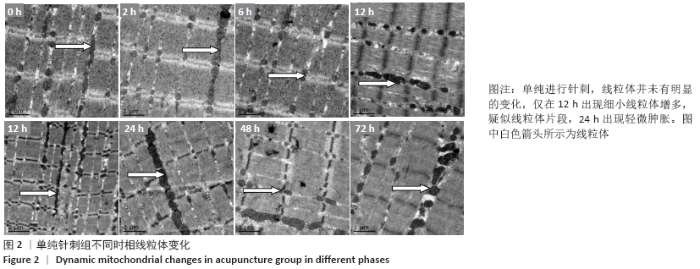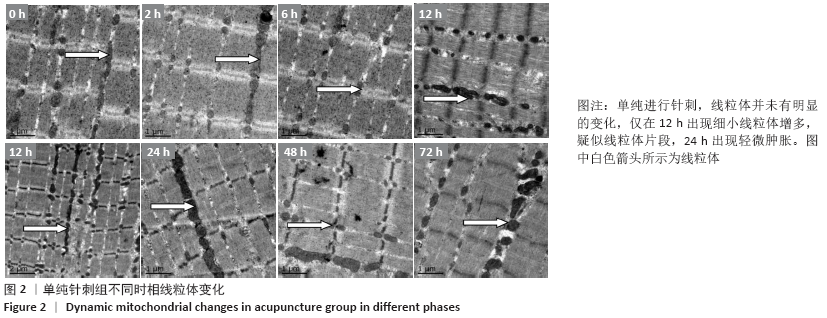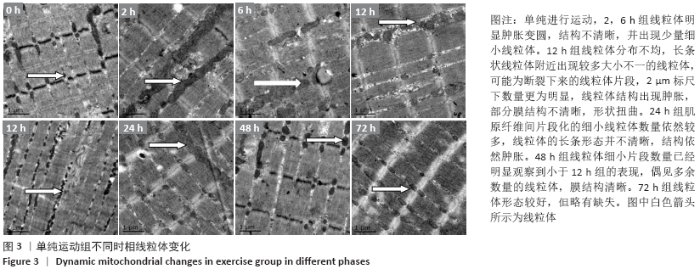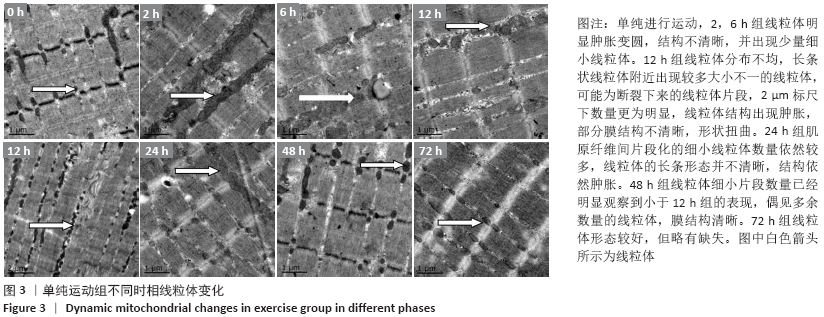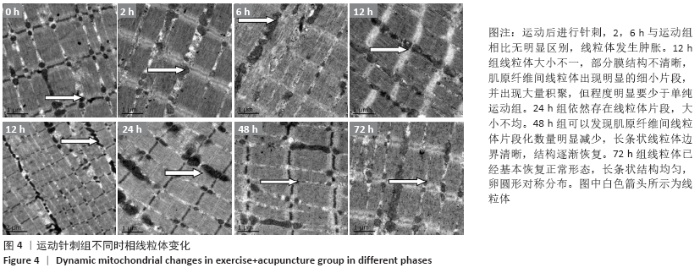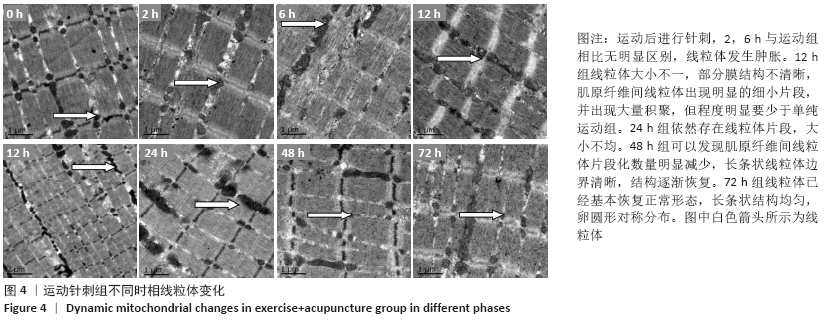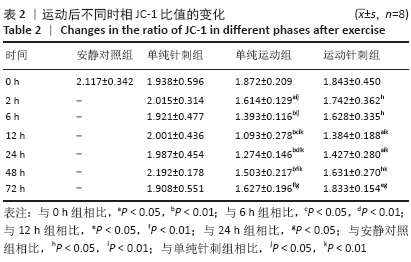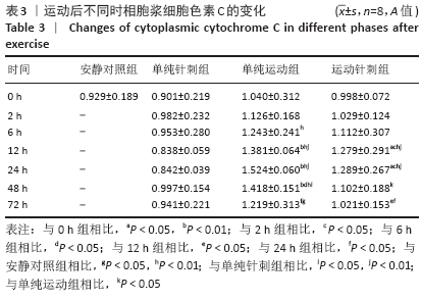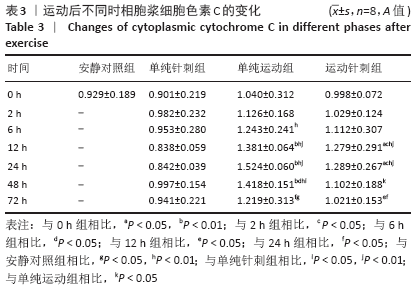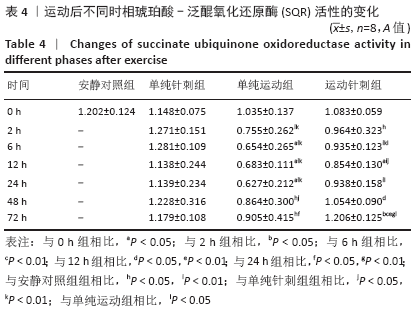[1] 刘阳. 离心运动对肌浆网钙调控蛋白的作用及针刺的干预机制[D]. 北京:北京体育大学, 2013.
[2] 赵晓红,毕婷婷,孙健. 线粒体损伤机制及测定方法[C]. 中国毒理学会论文集,2014:57-58.
[3] 卢鼎厚,张志廉,段昌平,等.阿是穴斜刺治疗肌肉损伤的研究[J].上海针灸杂志,2000,9(S1):65-67.
[4] 张学林, 史冀鹏, 高晓娟, 等. 针刺对离心运动性骨骼肌过度使用损伤的治疗研究[J]. 中国运动医学杂志,2013,32(10):899-909.
[5] 赵晓琴,白胜超,孙君志,等.针刺对离心运动大鼠骨骼肌Omi/XIAP信号通路的影响[J].西安体育学院学报,2018,35(4):468-477.
[6] LISA T, SHUN N, VINCENT P, et al. Mitochondrial dynamics:overview of molecular mechanisms. Essays Biochem. 2018;62(3):341-360.
[7] VAN D, SHEN Q, KAWAJIRI S. Mechanisms of mitochondrial fission and fusion. Cold Spring Harb Perspect Biol. 2013;5(6):72-77.
[8] ARMSTRONG RB, OGILVIE RW, SCHWANE JA. Eccentric exercise-induced injury to rat skeletal muscle. J Appl Physiol Respir Environ Exerc Physiol. 1983;54(1):80-93.
[9] 尚画雨,张荷,夏志,等.PINK1/Parkin介导的线粒体自噬在运动性骨骼肌损伤中的作用[J].上海体育学院学报,2018,42(3):103-110.
[10] 高扬,白胜超,陈圣菊,等.运动诱导骨骼肌损伤对结蛋白聚集体的影响[J].中国组织工程研究,2020,24(8):1243-1248.
[11] CHAN DC. Mitochondria: dynamic organelles in disease, aging, and development. Cell. 2006;125(7):1241-1252.
[12] MIETTINEN TP, BJ RM. Mitochondrial function and cell size: an allometric relationship. Trends Cell Biol. 2017;27(6):393-402.
[13] MARTIN LJ. Mitochondrial and cell death mechanisms in neurodegenerative diseases. Pharmaceuticals. 2010;3(4):839-915.
[14] GAMA V, SWAHARI V, SCHAFER J, et al. The E3 ligase parc mediates the degradation of cytosolic cytochrome C to promote survival in neurons and cancer cells. Sci Signal. 2014;7(334):ra67.
[15] KUAI Z, HAI YY, PENG YT, et al. Mitochondrial division inhibitor 1 protects cortical neurons from excitotoxicity:a mechanistic pathway. Neural Regen Res. 2018;13(9):66-74.
[16] SZABADKAI G, SIMONI AM, CHAMI M, et al. Drp-1-dependent division of the mitochondrial network blocks intraorganellar ca waves and protects against ca-mediated apoptosis. Molecular Cell. 2004;16(1):59-68.
[17] 孙良,赵刚.运动性骨骼肌损伤后不同时刻大鼠肱三头肌超微结构及肌酸激酶的变化[J]. 沈阳体育学院学报,2015,34(3):74-78.
[18] AMEIS K, TROUTH AJ, BOND V, et al. Degeneration/regeneration as a mechanism contributing to the effect of manual acupuncture-induced injury on rat skeletal muscle. In Tech. 2011;(8):138 -150.
[19] 郭彦青, 张敏, 赵晓丽, 等. 不同运动方式和时间对大鼠骨骼肌线粒体呼吸链复合体酶Ⅰ和Ⅳ活性的影响[J]. 中国组织工程研究与临床康复,2011, 15(2):317-320.
[20] HUERTAS R, CAMPOS Y, DIAZ E, et al. Respiratory chain enzymes in muscle of endurance athletes: effect of L-carnitine. Biochem Biophys Res Commun. 1992;188(1):102-107.
[21] 尚画雨,白胜超,夏志,周越,王瑞元.运动诱导骨骼肌损伤对大鼠骨骼肌线粒体结构和功能的影响[J].北京体育大学学报,2018,41(1):58-63.
[22] GAO M, YANG HY, LIU TY, et al. Effects of manual acupuncture and electroacupuncture on mitochondria of skeletal muscle cells in rats of acute swimming exercise. Zhongguo Zhen Jiu. 2005;25(6):421.
[23] 刘晓然,李俊平,王蕴红,等.大负荷运动及针刺干预对骨骼肌微管蛋白的影响[J].中国组织工程研究,2016,20(33):4949-4956.
[24] 李俊华,王正珍,唐云峰,等.针刺对大鼠骨骼肌挫伤后肌肉再生的影响[J].北京体育大学学报,2012,35(6):61-65. |


